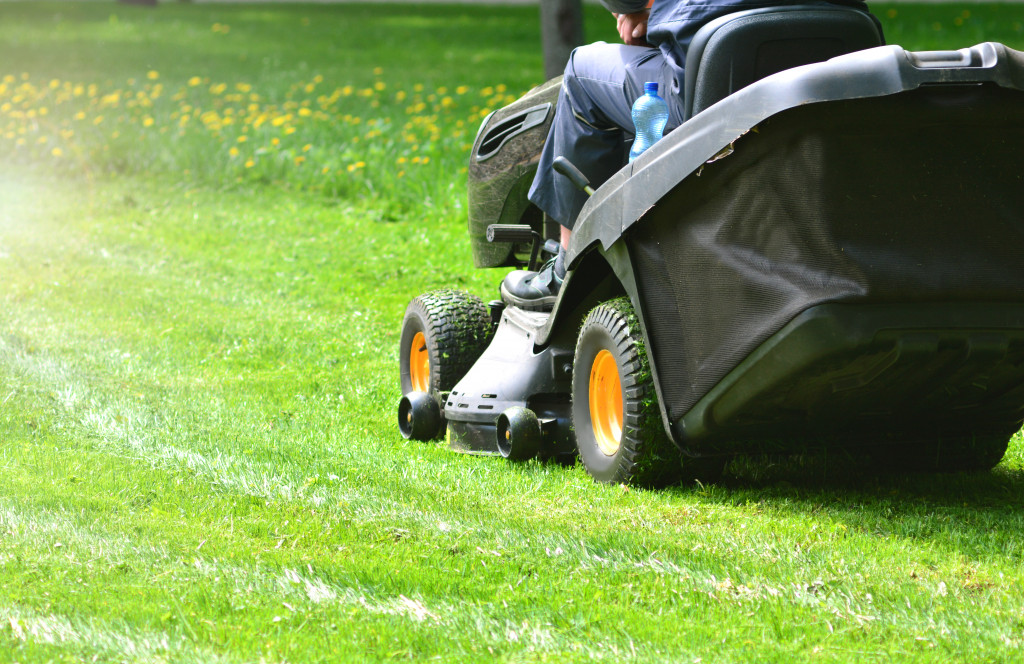If you have just bought a home and moved in—congratulations. The freedom to customize every space is now in your hands, although it also entails maintenance on your part. For new homeowners, the upkeep may catch them off-guard. Owning a home requires commitment after all.
As soon as you settle down, look around. What’s the first thing that you think needs tending? Most of the time, it would be your lawn, with grasses and weeds all in a mess. If it’s in the front yard of your home, all the more that you need to put in time and effort for the landscape garden. A well-tended front lawn can give immediate character and vibrancy to your home’s facade.
The Benefits of Caring for Your Lawn
New homeowners may not yet grasp the importance of maintaining their lawn. If you live in a rural area, you may well see that most other homeowners tend to their lawns regularly. Truth is that maintaining those grasses isn’t just about improving the landscape but it’s also about reaping various benefits.
Don’t forget that grass is a plant, too, so having some on your lawn helps promote the ecosystem and clean the air in your surroundings. Grasses also have the great ability to soak up and filter water, which is very beneficial to those in an urban environment where flooding is rampant.
The grasses around your home can significantly keep the temperature in the area mild and moderate, a great help for those in a hot climate. Somehow, they help you lower your A/C bills during the summer. So if you look at the bigger picture, those grasses are there for a reason. Make sure they’re well-tended using the right tools and techniques; better yet, make lawn care your new hobby.
Understanding the Basic Tools Needed in Your Lawn
To begin sprucing up your lawn, you need the most essential tools ready anytime and learn the right ways to use them. Here are some must-haves for your lawn care collection:
Lawnmower
Every new homeowner should invest in a lawnmower, which is basically used for cutting the grasses and keeping them under control. Without one, it can be really hard to keep your lawn trimmed and tidy.
Lawnmowers come in different types depending on your need—walk-behind or riding lawnmower, self-propelling or not, the kind of power it uses, maximum speed, cutting width, and even price.
When mowing, don’t close cut, even if just occasionally. Cut only a third of the grass blades, keep the mower balanced and sharp, mow only when the grass is dry, and recycle the grass clippings for mulch.
String Trimmer
There are parts where lawnmowers cannot reach, particularly steep inclines or smaller areas. In this case, you need a string trimmer in which strings can cut through weeds and grasses. The strings can be rotated at a quick pace, cutting their way through any plants.
You may choose between two-cycle and four-cycle engines. If you’re looking for one that can start quickly, choose a four-cycle engine although its upfront price can be very expensive. Other features you may choose from are straight-shaft and curved-shaft trimmer. The latter is easier to carry and would work well with low branches and shrubs.

Spreader
When applying fertilizers, seeds, and pesticides manually, you’re bound to miss some parts and consume much time. Using a spreader can greatly help you to speed up the process without you having to touch those harmful chemicals.
Choose from the main three types according to the size of your lawn—broadcast, drop, and handheld spreaders. Broadcast spreaders are for larger lawns, drop spreaders are for medium-sized, and handheld spreaders are for smaller lawns.
Pruner
You will need a different tool to cut down the diseased or dead branches. Finding the right kind of pruner will depend on what you will be working it for and your budget. Pole saws, loppers, tree pruners, and pole pruners are your best choice when removing larger trees’ larger branches.
Smaller twigs and bush will just need shears, bypass pruners, or anvil. However, take extra care when dealing with larger branches. As much as possible, opt for experts’ help to avoid DIY accidents.
Edger
Even if you have mowed your grasses really well, your lawn will still not look that good when its edges remain a mess. An edger may look like a string trimmer at first, but it has a different purpose with its vertical metal blades. After mowing, finish your lawn by giving it a touch of dramatic edges and lines.
A great house, an inviting curb, and a perfect lawn—there’s no other way to immediately express how much you’re living the American dream. Don’t wait until your lawn screams it needs care. Make lawn and landscape care a habit.

